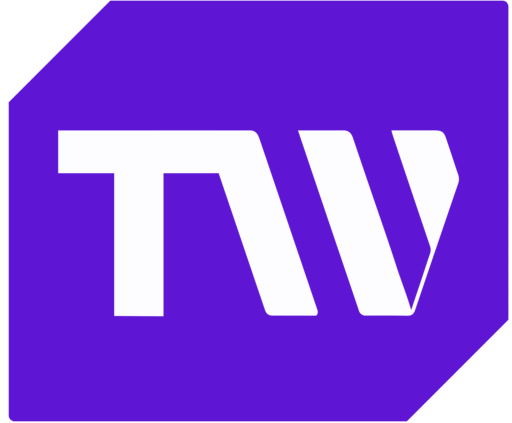What SaaS Metrics Should You Be Tracking?
In 2022, the Software-as-a-Service industry grew to a whopping $237.48 billion and this number is expected to hit $900 billion by 2030. As a result of this extensive growth, the SaaS industry has become increasingly competitive and is less conducive to weaker players in the space.
But there’s good news too.
Top SaaS companies take advantage of the wealth of data they can access, allowing them to identify potential opportunities for growth and gain competitive advantages. In other words, they track essential metrics that allow them to make data-driven decisions with higher chances of favorable outcomes.
Now, here’s the million-dollar question — what SaaS metrics should you track as a company?
In the following paragraphs, we share insights into some of the most powerful SaaS metrics that can give you and your company a comprehensive insight into your performance, weak areas, and potential opportunities in your specific niche.
Why Should You Narrow Down on Your SaaS Metrics?
As a business owner in the SaaS space, analytics should be one of your best friends. After all, these complex data show you if what you’re doing works and how you can improve your results. As a result, keeping track of these essential metrics is a must-do if you want to remain competitive.
But can you track every metric that exists? The answer’s no. Besides, it isn’t very practical to try and stay on top of every possible metric if you want to optimize your business for your target audience. So, you’ll need to choose the SaaS metrics that are ideal for your company.
This is where this blog comes into the picture.
But before that, here are some reasons you should track only the metrics that have a direct impact on your business:
- It allows you to focus on the Key Performance Indicators (KPIs) that are directly tied to your business goals, ensuring a more precise and actionable analysis of your business performance
- Choosing which metrics to track allows you to efficiently allocate your resources, reducing wasted time, effort, and expenses
- Narrowing down your metrics also provides a clear and consistent measurement of success. It helps define what success looks like for your specific company and provides a clearer evaluation of progress
- Focusing on specific metrics aids strategic decision-making. Your business can align its strategies with the metrics that are most indicative of growth, customer satisfaction, and overall success
10 Essential SaaS Metrics You Should Track
From SaaS startups to more mature companies, the goal is the same — keep the costs low and the profits high. Here are some essential SaaS metrics that can provide valuable insights to help you create a straighter path from where you are to where you want to be:
1. Retention rate
Your customer retention rate is a vital indicator of how satisfied your customers are with the quality of your product or services. Generally, your retention rate is the percentage of customers who maintain an active subscription or continue purchasing after their first transaction. By keeping track of your customer retention rate, you can evaluate whether your efforts are in the right direction.
2. Traffic-to-Lead rate
Traffic-to-lead rate puts a number on the percentage of visitors to your website that you successfully convert into leads — whether they’re opting for a trial or signing up for your newsletters. By tracking this metric, you can determine how effective your strategies for generating leads are.
3. Customer conversion rate
Every smart business owner knows this is an essential metric to track and it is no different in the SaaS industry. By tracking your customer conversion rate (or lead-to-customer rate), you gain a clear picture of how many customers pay for your product or services. Generally, a higher conversion rate indicates that your onboarding tactics are effective and your unique selling points (USPs) are evident.
4. Churn rate
In the same way that you keep track of the number of customers you gain, you also need to stay on top of the number you lose. This is where churn rate as a SaaS metric comes into play. However, there are two categories of churn rate — customer churn rate and revenue churn rate.
Your customer churn rate evaluates the percentage of customers that close up their accounts every month compared to the total number of your customers. On the other hand, your revenue churn rate shows you the amount of cash you lose per month as the percentage of revenue lost from your total revenue.
5. Daily and monthly active users
Another essential SaaS metric you should track is your Monthly Active Users (MAU). You can also go the extra mile to track your Daily Active Users (DAU) if you want a finer breakdown of the active customers your company retains.
Your MAU gives a quick overview of how many customers actively use your product or service every month while your DAU shows you how many users interact with your solution daily. You should note that a higher DAU-MAU ratio indicates that your product is highly engaging and your customer base is active.
6. Customer Engagement Score (CES)
While your DAU and MAU are important metrics for keeping track of how active your user base is, they may not give you the entire picture. This is where the Customer Engagement Score (CES) metric shines.
CES goes a step further by tracking not just user logins but how they interact with your product. With CES, you can gain insights into user interactions, such as clicks, scrolls, and more. This SaaS metric can provide insight into which parts of your product are the most successful and whether or not you need to make improvements.
7. Average Revenue Per Account (ARPA)
Also called Average Revenue Per User (ARPU), your ARPA is the average revenue that a specific customer account generates over a specific period. By keeping track of your ARPA, you gain insight into the impact of your customer base on revenue. Knowing the average revenue generated per account can also help you identify opportunities for upselling and improving customer growth.
This way, you can maximize the value of each customer and make data-driven decisions for customer segmentation.
8. Customer Acquisition Cost (CAC)
As your SaaS company grows, metrics like Customer Acquisition Cost (CAC) become more important as they provide a basis for evaluating your growth strategies and sustainability models.
CAC provides an estimate for the total cost your business incurs to convert a new customer — including expenses on sales and marketing efforts. Generally, the goal is to keep your CAC as low as possible to ensure scalability and long-term profitability.
9. Customer Lifetime Value (CLV)
As a metric, customer lifetime value provides an estimate of the total revenue a business can expect a single customer to generate throughout the time they remain a customer. While it may not be the most commonly tracked SaaS metric, CLV can help you understand the long-term value of customer relationships, thereby helping you make data-driven decisions for customer acquisition and retention investments.
10. Expansion Revenue
More mature SaaS companies do not always rely on new customer acquisition to expand their revenue base. So, at this stage, expansion revenue becomes a vital metric to track. Expansion revenue tracks the additional revenue your business earns from existing customers through the sales process of upselling, cross-selling, and upgrades.
Generally, a high expansion revenue value indicates that your company excels at account management and has a valuable product.
The Bottom Line
Metrics can be a goldmine of information and actionable data for companies in the SaaS industry. However, knowing which metrics to track comes first. After all, you don’t want to waste resources tracking metrics that don’t matter to you. Instead, prioritize SaaS metrics that directly impact your business and provide insights to guide your decision-making processes.
We hope this blog helps you narrow down the metrics that are more effective to focus on, depending on the current stage and objectives of your SaaS business.

